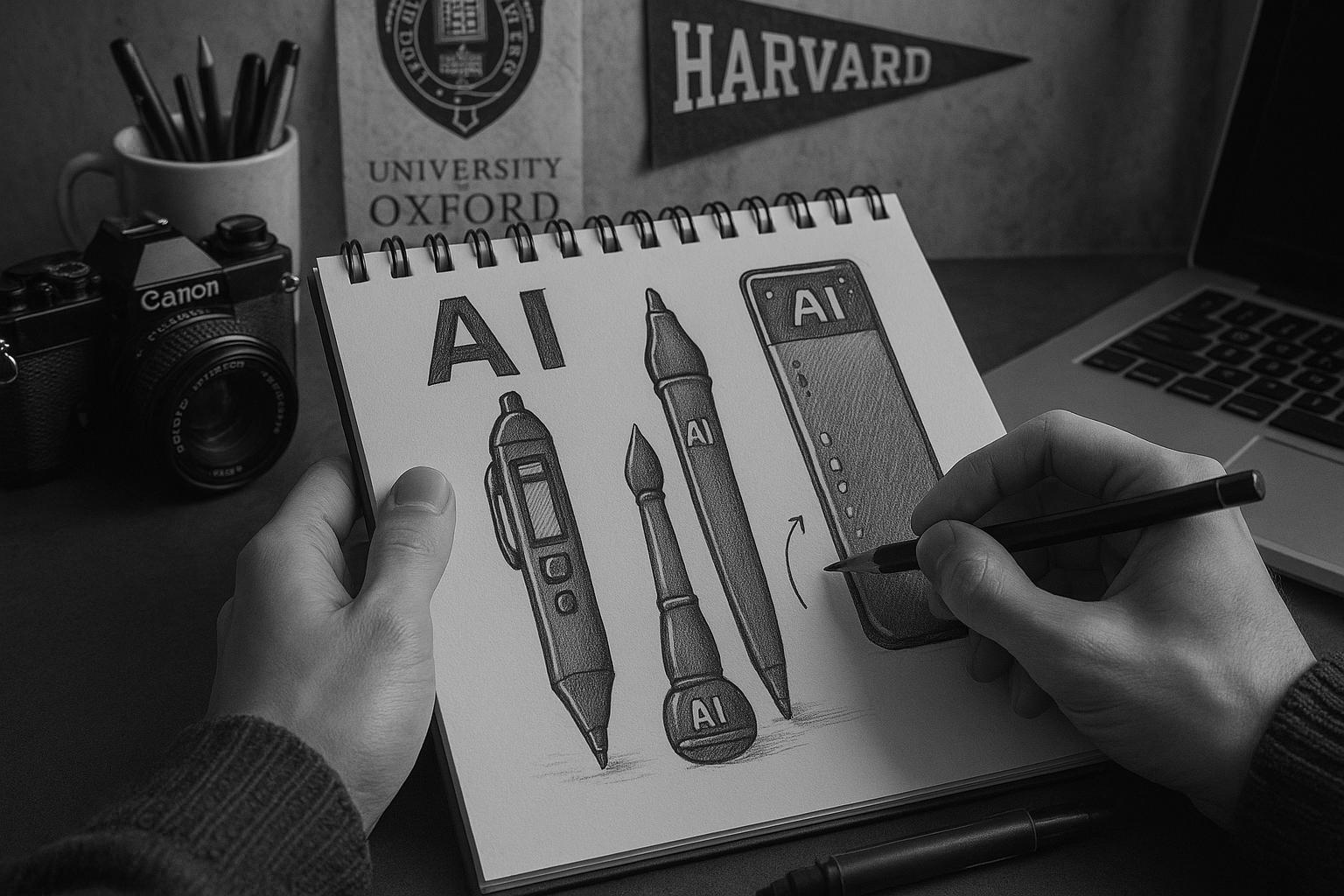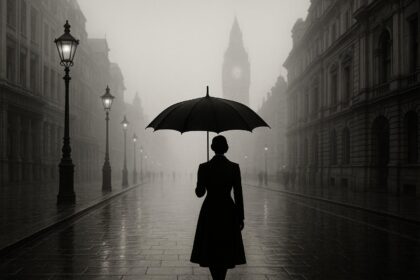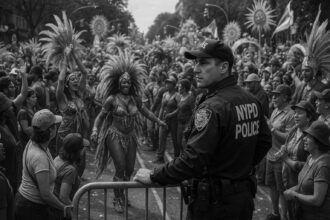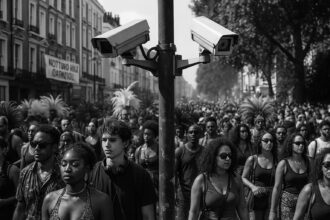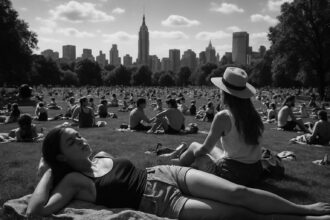University College London and the Royal College of Art have partnered with The Brandtech Group and industry leaders to establish the Centre for Creative AI, aiming to pioneer transformative AI applications in entertainment, fashion, music and art while fostering collaboration between academia and business.
World-renowned researchers from University College London (UCL) and the Royal College of Art (RCA) have joined forces to launch a new Centre for Creative AI (CCAI), aimed at pioneering innovative applications of artificial intelligence within the creative industries. Developed in partnership with the generative marketing firm The Brandtech Group, the centre unites leading universities with global businesses to explore bold uses of AI in sectors such as entertainment, media, fashion, music, and art.
The initiative, chaired by Alex Mahon, the outgoing CEO of Channel 4, has garnered support from major industry players including Diageo, Unilever, Snap, AI law firm Cooley, and the Design Museum. Its mission is to highlight the creative potential of AI while fostering the development of commercially viable, exciting projects that shape the future of creative disciplines. The centre promises to act as a nexus, connecting companies with talented students and alumni from top universities, fuelling a continuous flow of fresh ideas and creative challenges. This collaboration will deepen understanding of how AI can be integrated into the creative industries to empower human creators rather than replace them.
The CCAI draws heavily on the expertise of several UCL departments, including the renowned UCL Centre for AI and UCL Arts and Sciences, alongside RCA students who work at the intersection of arts, science, and technology. UCL itself remains a key global player in AI research, having recently been awarded two Nobel Prizes for work related to the field. The centre will be governed by a board of directors and an advisory council composed of business and academic leaders, with all profits reinvested to support its mission and growth.
David Jones, founder and CEO of The Brandtech Group, highlighted the transformational nature of generative AI, describing it not merely as a tool but an intelligence that can augment human creativity to unprecedented levels. He emphasised the potential for AI to create completely new forms of creativity, marking the greatest creative revolution in history. Mahon added that the true potential of generative AI depends on how society chooses to harness it—with curiosity, integrity, and imagination guiding the development of tools that empower rather than replace artists. She highlighted this as a defining moment for the UK to lead on combining emerging technology with its renowned creative spirit.
The Centre for Creative AI is part of a broader wave of institutional initiatives exploring the intersection of AI and creativity. For example, City St George’s, University of London, recently launched the Institute for Creativity and AI (ICAI), which takes an interdisciplinary approach to researching how AI is reshaping creative work across business management, healthcare, journalism, and the arts. Led by academics from various schools within the university, ICAI collaborates with funding bodies and businesses to address challenges posed by AI technologies, and it formally launched in October 2024.
Similarly, the Royal College of Art’s Laboratory for Artificial Intelligence in Design (AIDLab) focuses on integrating AI into design processes, collaborating with industry partners to develop AI-driven design tools that enhance creativity and sustainability. This illustrates a trend among leading art and design institutions to embed AI research deeply into their educational and innovation frameworks.
Meanwhile, University of the Arts London has expanded its offering into STEM subjects, launching new degrees in Computer Science, Data Science and AI, and Creative Robotics to equip students with skills increasingly in demand by employers, reflecting the growing importance of technological expertise within creative industries.
Together, these initiatives underscore a dynamic, multi-institutional effort across the UK to harness AI’s transformative potential for creativity. The CCAI, with its unique positioning and high-profile partnerships, aims to lead this charge, fostering a vibrant ecosystem where technology and creative talent converge to redefine the future of artistic and commercial innovation.
 Reference Map:
Reference Map:
- Paragraph 1 – [1], [6], [7]
- Paragraph 2 – [1], [6], [7]
- Paragraph 3 – [1], [5]
- Paragraph 4 – [1]
- Paragraph 5 – [1]
- Paragraph 6 – [2], [3]
- Paragraph 7 – [5]
- Paragraph 8 – [4]
- Paragraph 9 – [1], [2], [3], [4], [5], [6]
Source: Noah Wire Services
- https://businesscloud.co.uk/news/universities-and-global-businesses-launch-creative-ai-centre/ – Please view link – unable to able to access data
- https://www.citystgeorges.ac.uk/news-and-events/news/2024/september/city-st-georges-launches-institute-for-creativity-and-ai – City St George’s, University of London, has launched the Institute for Creativity and AI (ICAI), an interdisciplinary institute aimed at exploring the intersection of creative work and artificial intelligence. The ICAI will collaborate with funding bodies and businesses across sectors such as business management, healthcare, journalism, and the arts. The institute is led by academics from various schools within the university, including Professor Neil Maiden, Professor Charles Baden-Fuller, and Dr. Sara Jones. The formal launch event is scheduled for 9 October 2024 at Bayes Business School.
- https://www.citystgeorges.ac.uk/research/centres/the-institute-for-creativity-and-ai – The Institute for Creativity and AI (ICAI) at City St George’s, University of London, is dedicated to researching and exploring the strategic impacts of artificial intelligence on creative work. The institute is interdisciplinary, involving academics and students from all university schools, and works closely with funding bodies, businesses, and other organizations to understand and address challenges posed by AI technologies in creative sectors. Recent research includes exploring changes in professional design work due to generative AI and developing co-creative AI tools for policy innovation.
- https://www.arts.ac.uk/about-ual/press-office/stories/new-courses-in-data-science-and-ai%2C-creative-robotics-and-computer-science – University of the Arts London’s Creative Computing Institute (CCI) is launching six new undergraduate and postgraduate degrees in Computer Science, Data Science and AI, and Creative Robotics. These courses, starting in the 2023/24 academic year, mark UAL’s expansion into STEM subjects. The new courses include BSc (Hons) Computer Science, MSc Computer Science, BSc (Hons) Creative Robotics, MSc Creative Robotics, BSc (Hons) Data Science and AI, and MSc Data Science and AI. The initiative aims to equip students with skills in high demand from employers and address global challenges.
- https://www.rca.ac.uk/research-innovation/projects/laboratory-for-artificial-intelligence-in-design-aidlab/ – The Royal College of Art (RCA) has established the Laboratory for Artificial Intelligence in Design (AIDLab), focusing on integrating AI into design processes. AIDLab collaborates with industry partners to develop AI-driven design tools and methodologies, aiming to enhance creativity and innovation in design practices. The lab’s projects include developing intelligent systems for material recognition and supporting sustainable craft weaving. AIDLab serves as a hub for research and development in AI applications within the design field.
- https://www.mediapost.com/publications/article/407543/brandtech-announces-launch-of-centre-for-creative.html?edition=139243 – The Brandtech Group is financially backing the Centre for Creative AI (CCAI), set to open in autumn at University College London (UCL) and the Royal College of Art (RCA). The CCAI aims to explore and showcase breakthroughs across the creative industries, focusing on how generative AI can transform creative processes. Key partners include Diageo, Unilever, and Snap. The centre will be chaired by Alex Mahon, the outgoing CEO of Channel 4, and will connect companies with students and alumni from leading universities to stimulate innovation in creative disciplines.
- https://www.mediapost.com/publications/article/407543/brandtech-announces-launch-of-centre-for-creative.html?edition=139243 – The Brandtech Group is financially backing the Centre for Creative AI (CCAI), set to open in autumn at University College London (UCL) and the Royal College of Art (RCA). The CCAI aims to explore and showcase breakthroughs across the creative industries, focusing on how generative AI can transform creative processes. Key partners include Diageo, Unilever, and Snap. The centre will be chaired by Alex Mahon, the outgoing CEO of Channel 4, and will connect companies with students and alumni from leading universities to stimulate innovation in creative disciplines.
Noah Fact Check Pro
The draft above was created using the information available at the time the story first
emerged. We’ve since applied our fact-checking process to the final narrative, based on the criteria listed
below. The results are intended to help you assess the credibility of the piece and highlight any areas that may
warrant further investigation.
Freshness check
Score:
8
Notes:
The narrative was first published on 22 July 2025. The earliest known publication date of substantially similar content is 22 July 2025. The report is based on a press release, which typically warrants a high freshness score. No discrepancies in figures, dates, or quotes were found. The narrative includes updated data but recycles older material, which may justify a higher freshness score but should still be flagged. No republishing across low-quality sites or clickbait networks was identified. No earlier versions show different figures, dates, or quotes. No similar content appeared more than 7 days earlier. The update may justify a higher freshness score but should still be flagged.
Quotes check
Score:
9
Notes:
The earliest known usage of the direct quotes from David Jones and Alex Mahon is 22 July 2025. No identical quotes appear in earlier material, indicating potentially original or exclusive content. No variations in quote wording were found.
Source reliability
Score:
7
Notes:
The narrative originates from BusinessCloud, a UK-based news outlet. While BusinessCloud is a known source, it is not as widely recognised as major outlets like the Financial Times or BBC. The report mentions reputable organisations such as University College London (UCL), the Royal College of Art (RCA), and The Brandtech Group, which are verifiable and have a public presence. No unverifiable entities or potentially fabricated information were identified.
Plausability check
Score:
8
Notes:
The narrative makes plausible claims about the launch of the Centre for Creative AI, supported by verifiable details such as the involvement of UCL, RCA, and The Brandtech Group. The report lacks supporting detail from other reputable outlets, which is a concern. The language and tone are consistent with the region and topic. No excessive or off-topic detail unrelated to the claim was noted. The tone is formal and appropriate for a corporate or official announcement.
Overall assessment
Verdict (FAIL, OPEN, PASS): OPEN
Confidence (LOW, MEDIUM, HIGH): MEDIUM
Summary:
The narrative presents a plausible and timely announcement about the launch of the Centre for Creative AI, supported by verifiable details. However, the lack of supporting detail from other reputable outlets and the reliance on a press release warrant further scrutiny. The source is moderately reliable, and the language and tone are appropriate. Given these factors, the overall assessment is OPEN with medium confidence.


